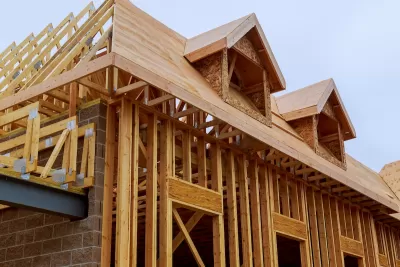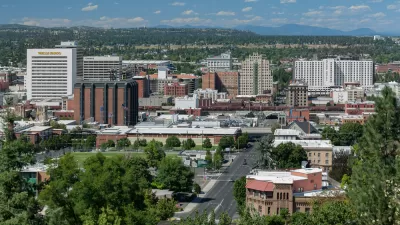An affordable housing developer explains the hurdles to building more housing for middle-income households.

In a piece in Greater Greater Washington, Patrick McAnaney explains the challenges faced by affordable housing developers in trying to build for middle-income families.
According to McAnaney, “In expensive cities, middle-income housing developments—new homes and apartments that residents earning about the median family income can afford—simply cannot win the competition for land.” Because land is a commodity, lots will be sold to the highest bidder, and developers will outbid each other to ensure the sale, passing on the cost to future tenants or buyers.
“There is, of course, far more to this story. Zoning laws, transportation networks, the advent and dominance of private vehicles, and many other factors affect the geospatial layout of cities,” McAnaney concedes, but market competition largely explains the clustering of similar uses common in U.S. cities.
McAnaney explains how competition from different housing developers also drives up the cost of land and thus rent costs. Ultimately, when the “highest and best use” is defined as the one that brings in the most revenue, “This ‘highest and best use’ dynamic largely explains why developers are not able to produce more middle-income housing in urban areas. Even relatively small differences in rents can cause huge differences in land value.”
FULL STORY: Why no one’s building middle-income housing in American cities

Planetizen Federal Action Tracker
A weekly monitor of how Trump’s orders and actions are impacting planners and planning in America.

Congressman Proposes Bill to Rename DC Metro “Trump Train”
The Make Autorail Great Again Act would withhold federal funding to the system until the Washington Metropolitan Area Transit Authority (WMATA), rebrands as the Washington Metropolitan Authority for Greater Access (WMAGA).

DARTSpace Platform Streamlines Dallas TOD Application Process
The Dallas transit agency hopes a shorter permitting timeline will boost transit-oriented development around rail stations.

San Francisco's School District Spent $105M To Build Affordable Housing for Teachers — And That's Just the Beginning
SFUSD joins a growing list of school districts using their land holdings to address housing affordability challenges faced by their own employees.

Car-Centric LA Suburb Looks to a Train-Oriented Future
City leaders in Rancho Cucamonga, the future western terminus of the Brightline West rail line to Las Vegas, want to reimagine the city as a transit-oriented, pedestrian-friendly community.

New Alaska Bitcoin Mine Would Burn as Much Energy as the State’s Largest Coal Plant
Fueled by “stranded” natural gas, the startup hopes to become the largest in the US, and to make Alaska an industry center.
Urban Design for Planners 1: Software Tools
This six-course series explores essential urban design concepts using open source software and equips planners with the tools they need to participate fully in the urban design process.
Planning for Universal Design
Learn the tools for implementing Universal Design in planning regulations.
Municipality of Princeton
Roanoke Valley-Alleghany Regional Commission
City of Mt Shasta
City of Camden Redevelopment Agency
City of Astoria
Transportation Research & Education Center (TREC) at Portland State University
US High Speed Rail Association
City of Camden Redevelopment Agency
Municipality of Princeton (NJ)





























